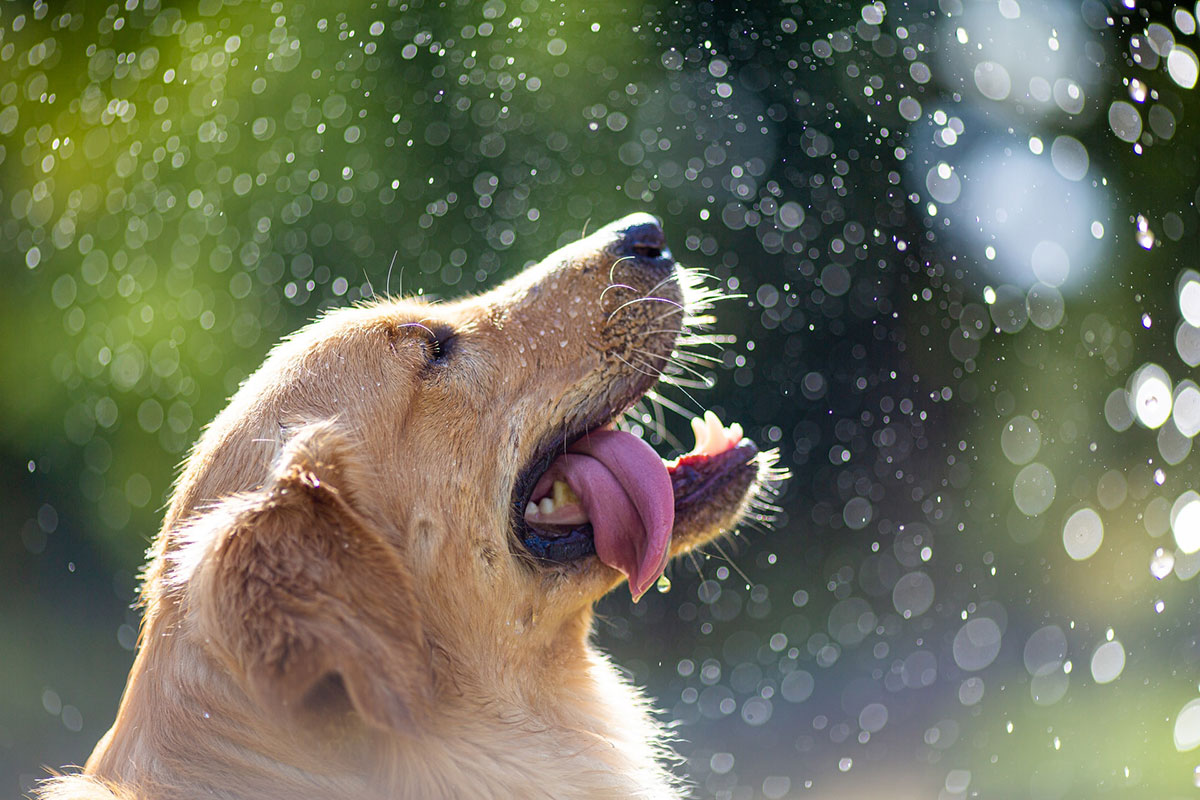Finding chihuahua barking solutions is a common challenge for small dog owners across the globe. The delightful chirps of a happy Chihuahua can quickly escalate into a relentless symphony of yaps, leaving many seeking ways on how to get a Chihuahua to stop barking. But fret not, learning to silence a noisy Chihuahua isn’t merely a pipe dream. With the right techniques and persistent training, a serene household is within reach. Understanding your pet’s motives and guiding them with kindness can lead to a more peaceful coexistence.
Key Takeaways
- Identifying reasons behind a Chihuahua’s barking is essential for effective training.
- Yelling is not an effective method to silence a noisy Chihuahua; it can worsen the barking.
- Offering treats must be done judiciously to avoid inadvertently rewarding excessive barking.
- Understanding triggers and applying correct training techniques form the core of any barking solution.
- Consistency and patience are crucial in the endeavor to quiet a Chihuahua.
- Positive reinforcement is the key to successfully training a Chihuahua to stop barking.
Understanding Your Chihuahua’s Incessant Barking
If you’re confronted with the challenge to control your Chihuahua’s barking problem, it’s crucial to discern the factors that trigger their vocal outbursts. Just like humans have varied dispositions, Chihuahuas exhibit a spectrum of temperaments and vocal tendencies. Whether your furry companion is a sporadic barker or seemingly yaps at shadowy dust motes, grasping the root causes is the first step toward nurturing a calmer canine.

The Nature vs. Nurture of a Chihuahua’s Yap
Many pet owners ponder why do Chihuahuas bark so much? It’s a complex interplay of their innate personality (nature) and the environment they’re raised in (nurture). While you might not have control over their genetic predispositions, you certainly can shape their behavior through consistent and positive training methods.
Common Reasons Behind Your Chihuahua’s Barks
Before we can address the reasons behind excessive barking, it’s key to observe and understand the wide array of stimuli that could be leading to your Chihuahua’s vocal reactions:
- Excitement: Your furry friend might be expressing joy and anticipation.
- Boredom: Lack of stimulation can result in attention-seeking yaps.
- Perception of Danger: A protective instinct could trigger a barrage of barks.
- Attention or Resource Demand: Your Chihuahua might bark to claim toys or your undivided affection.
- Guarding Territory: An instinctual response to unfamiliar faces or fellow canines entering their domain.
- Responses to other Dogs or Sights: Social cues from other dogs or reactions to novel sights can incite barking.
By tuning into these triggers and tailoring your response, you can begin to craft a bespoke behavioral modification plan that promises to bestow a more peaceful ambiance at home, while respecting the expressive nature of your beloved Chihuahua.
Busting Myths: Do Chihuahuas Bark at Nothing?
Perplexed owners often ask how to stop chihuahua from excessive barking, especially when their pint-sized pets seem to be sounding off without cause. The common myth that Chihuahuas bark at nothing can leave many scratching their heads. Yet, what might seem like a whimsical quirk of these tiny canines is, in fact, a testament to their acute senses. With hearing, sight, and smell far superior to ours, they respond to stimuli we’re oblivious to – what we perceive as ‘nothing’ could be a myriad of undetectable triggers prompting their vocal reaction.
Exploring the Canine Senses: It’s fascinating to consider that a Chihuahua might catch the scent of a passerby that we can’t smell, hear the ultrasonic noise from electronics inaudible to human ears, or spot the slightest movements that escape our notice. This heightened awareness means that your Chihuahua could be alerting you to something significant in their environment, even if it appears they’re chihuahua barking at nothing to the human members of their household.
- Perhaps they hear a car engine from blocks away.
- They might sense an animal outside that hasn’t caught your attention.
- Their sharp eyes might register flickering shadows from outside, stirring them to bark.
Rather than dismissing these barks as baseless, understanding and acknowledging your Chihuahua’s sensitive perceptions is a stride towards mitigating excessive barking. With patience and keen observation, one can identify and address the unseen triggers, shaping a serene environment for both pet and owner. Patience and attunement to your Chihuahua’s exceptional senses are key in this journey.
Strategic Approaches to Silence a Noisy Chihuahua
Training a Chihuahua to be quiet and employing Chihuahua bark control methods begins with an understanding of what motivates your small companion’s vocal outbursts. By targeting the triggers and applying strategic approaches, you can guide your Chihuahua towards a more reserved behavior without dampening their spirited personality.

To mitigate unwarranted barking, it’s important to acknowledge that sometimes our reactions can inadvertently reinforce the habit. Addressing the issue requires a mix of patience, consistency, and clear guidelines.
The following table outlines a series of steps that can serve as a blueprint to your dog’s quiet training journey:
| Action | Goal | Method | Outcome |
|---|---|---|---|
| Identify Triggers | Understand what initiates barking | Observation and note-taking during episodes of barking | Informed basis for training approach |
| Avoid Yelling | Prevent reinforcing bark behavior | Maintain a calm demeanor when addressing barking | Minimized stress and confusion for the dog |
| Judicious Rewards | Encourage quiet behavior | Offer treats during moments of silence rather than during barking | Positive reinforcement of desired behavior |
| Consistent Reinforcement | Reduce excessive barking | Regular training sessions emphasizing silence | Long-term behavioral adjustment |
By following a systematic and empathetic approach, you can effectively address your Chihuahua’s propensity to bark excessively. Chihuahua bark control methods are not a one-size-fits-all solution and may require tailoring to your pet’s unique personality and barking triggers. Understanding the specifics of training a Chihuahua to be quiet can be a rewarding experience leading to a more harmonious home environment for both you and your furry friend.
How to Get a Chihuahua to Stop Barking
Dealing with a Chihuahua’s barks can be trying, but reaching quiet harmony is possible with proven tips to silence a barking Chihuahua and strategic strategies for Chihuahua bark control. It’s important to understand each interaction with your dog either reinforces or diminishes the behavior you’re seeking to modify. Let’s explore practical steps tailored to manage common barking problems effectively.

When your Chihuahua begins a cacophonous serenade, the natural impulse may be to raise your voice. Yet, the solution lies not in the volume of your response but in the consistency and positivity of your approach. Take command of the situation with calm authority, and remember: rewarding your pet during quiet moments is more effectual than during a barking episode.
Avoid Counterproductive Reactions: Yelling or showing frustration often backfires, inadvertently reinforcing the barking. Instead, maintain composure and use a neutral tone when addressing your Chihuahua’s vocal outbursts.
Discourage Barking with Smart Rewards: It’s tempting to offer a treat to hush the noise, but this can reward the barking instead. Fortify silence with treats to communicate that quiet behavior is desirable.
Hone in on the Barking Triggers: Pinpoint what initiates your Chihuahua’s barking – is it an overzealous reaction to the mailman, a defense mechanism against perceived threats, or vocal bouts of loneliness in the night? Tailor the training to address these specific causes, incorporating steps that resolve these individual challenges.
| Barking Scenario | Reason | Recommended Approach |
|---|---|---|
| Barking at Other Dogs | Fear or Territory Guarding | Introduce distance and progressively build confidence. For territory issues, limit access temporarily. |
| Barking at Strangers | Fear or Excitement | Create safe, controlled encounters. Use treats to promote calm behavior when strangers are present. |
| Nighttime or Alone | Separation Anxiety | Ensure comfort with toys and gradually increase periods of solitude. |
Implementing a plan crafted on the nuances of your Chihuahua’s barking habits will not only cultivate a quieter canine but will enhance your bond with your pet through mutual understanding and respect. Remember, patience and consistency in your efforts will yield the tranquil environment you both deserve.
Effective Communication to Reduce Chihuahua Barking

Dealing with a Chihuahua’s barking can often feel like a test of patience and creativity. It’s not just about the inconvenience; excessive barking can affect the quality of life for both you and your furry friend. A strategic approach combining clear communication and patience stands as the most humane and effective way to stop chihuahua’s incessant barking. Let’s discuss the complexities of this challenge and the chihuahua barking solutions that can usher in silence and serenity into your home.
Why Yelling Won’t Stop the Barking
When confronted with a Chihuahua’s piercing barks, the gut reaction might be to shout over the noise. Ironically, this response can exacerbate the situation. Yelling can confuse your pup, making them think you’re joining in on the noise. It might also stress them out or make them anxious, leading to more barking. Moreover, a Chihuahua may begin to associate their owner’s frustration with the stimulus that caused the barking, resulting in an increase in vocalization as a stress response. Thus, calmness and understanding are pivotal in addressing the root causes without adding to the noise.
The Importance of Reinforcing Quiet Behavior
Positive reinforcement plays a critical role in training your Chihuahua to embrace the quiet. Timely rewards, given when your pet is silent, teach them that peace is preferable—and treat-worthy! Consistency here is key, with every calm moment being an opportunity to reinforce the behavior you want to see. A Chihuahua’s learning curve will include recognizing silence as a positive state, one where they gain love, treats, and affection. This shift in focus from what’s wrong (incessant barking) to what’s right (calm quietude) is a foundational element of effective long-term chihuahua barking solutions.
Training a Chihuahua to Be Quiet: Tips and Tricks
The barks of a Chihuahua can range from endearing to excessive, and finding the balance is vital for both owner and pet. Silence a noisy Chihuahua not with force but with finesse, employing training tips for Chihuahua quietness that are rooted in understanding and patience. Let’s delve into the nuances of teaching essential commands that can help manage their barking with tactful positivity.

Teaching Commands: ‘Speak’ and ‘Quiet’
Making sense of the verbal cues can pave the way for effective communication between you and your Chihuahua. Mastering the ‘Speak’ and ‘Quiet’ commands can be game-changers in achieving tranquility. Implement training sessions that introduce these commands during opportune moments, gradually helping your furry friend to understand the desired behavior.
- Begin with the ‘Speak’ command by using a known stimulus, like knocking on the door, to naturally elicit a bark.
- Upon the bark, introduce the ‘Speak’ command, followed by immediate reward-based reinforcement such as treats or praise.
- Build a connection over time, until the ‘Speak’ command alone is sufficient to prompt a bark.
- Transition to the ‘Quiet’ command by waiting for your Chihuahua to bark, say ‘Quiet,’ and as soon as the barking ceases, offer a treat to associate silence with positive reinforcement.
Using Positive Reinforcement for Training Success
Consistent use of positive reinforcement is the cornerstone of any successful training regimen. Rewarding your Chihuahua promptly when they display the right behavior will encourage them to repeat it, slowly transforming into a habit. Whether it’s through verbal accolades or tangible treats, conveying to your Chihuahua that quietness is a behavior you value is key to a lasting change.
Remember, the power lies within positive affirmation.
| Command | Cue | Action by Chihuahua | Positive Reinforcement |
|---|---|---|---|
| Speak | Knock on door | Bark | Treat or Praise |
| Quiet | ‘Quiet’ command during bark | Silence | Treat or Praise |
Incorporate these techniques into regular, short, and enjoyable training sessions, and you’ll be on the path to a more peaceful environment—one where you both can thrive without the constant soundtrack of barking. With dedication and positive reinforcement, you can silence a noisy Chihuahua while maintaining the joyful spirit of your beloved companion.
Specialized Training to Stop Chihuahua’s Barking at Dogs and Strangers
Efficient training programs can set the foundation for a well-mannered Chihuahua. Targeting specific triggers that lead to excessive barking can help pet owners control their Chihuahua’s barking problem, particularly when it comes to barking at strangers and other dogs.
Understanding Trigger-Specific Barking
Each bark your Chihuahua emits is a form of communication, with unique triggers and underlying causes. Identifying why your Chihuahua feels the need to vocalize excessively in the presence of strangers or other animals is a critical first step. Recognition of symptoms such as fear, excitement, or territoriality allows you to tailor your approach to stop Chihuahua from excessive barking at strangers and promote more constructive behavior.
Desensitization and Counter-Conditioning Techniques
By using a step-by-step process of desensitization paired with positive counter-conditioning techniques, you can gradually acclimate your Chihuahua to previously troubling stimuli, reducing their knee-jerk reaction to bark.
| Issue | Desensitization Technique | Counter-Conditioning |
|---|---|---|
| Fear-Induced Barking | Maintain a safe distance from the trigger and gradually decrease it over time as your Chihuahua becomes more comfortable. | Offer treats and comforting praise to reinforce calm behavior in the presence of fearful stimuli. |
| Guarding Behavior | Temporarily remove your Chihuahua from their territory during encounters with strangers or dogs to minimize barking. | Once calm, reintroduce them to the situation, rewarding non-reaction and polite behavior. |
| Excitement Barking | Address your Chihuahua before they reach peak excitement by engaging with them in a neutral environment. | Redirect their energy by initiating play or practicing commands, delaying greetings until they are calm. |
Through consistent application of these strategies, your Chihuahua can learn to navigate situations with new dogs and strangers in a calm and collected manner. The key is to be patient and persistent, as changing deeply ingrained habits can take time. Controlling your Chihuahua’s barking problem not only creates a peaceful home environment but also fosters a trusting and confident bond between you and your pet.

Calming Separation Anxiety: Reducing Nighttime and Alone-Time Barking
Many Chihuahua owners are all too familiar with the shrill soundtrack of chihuahua anxiety barking at night. These bouts of barking are often rooted in separation anxiety and the distress felt by these sociable canines when left to their own devices. Developing strategies to quiet a chihuahua when alone seeks not only to hush the nocturnal chorus but also to foster a sense of security and contentment within your pet.
Enriching your Chihuahua’s environment with fitting diversions can act as an effective pacifier. Items such as food puzzles or tempting toys that engage their natural problem-solving instincts can detract from the stress of isolation, providing a focus point other than the absence of their human counterparts. This focused distraction aids in gradually lengthening the Chihuahua’s tolerance to being alone.
One of the paramount tactics in this training is ensuring that reactions to barking do not reinforce the behavior. Responsive attention, although well-intentioned, may inadvertently validate their vocal demands. Patience is critical; the quelling of barks should be the signal for your engagement. Only when your Chihuahua has eased back into quiet should you offer comfort or release them from their crate or designated space.
| Stage | Action | Purpose | Outcome |
|---|---|---|---|
| Early Evening | Introduce puzzle toy | Settle your Chihuahua with an enjoyable activity | Reduced pre-sleep anxiety and barking |
| Bedtime | Ensure a comfortable sleep environment | Simulate presence and security | Less likely to awaken from distress |
| Middle of the Night | Withhold attention during barking | Teach self-soothing and independence | Gradual decrease in barking episodes |
| Morning | Reward silence before attending | Reinforce quiet behavior | Encourage calm mornings |
By mindfully scaffolding your pet’s capacity to handle solitude, you slowly diminish their impulse to bark out of anxiety. The process necessitates that you remain unresponsive to barking as a plea for attention, only acknowledging your Chihuahua once they’ve settled. While this may challenge your impulse to soothe them, it is a worthwhile investment in their ability to find comfort in their own company, ultimately leading to more peaceful nights—for them and for you.
Becoming the Pack Leader: A Key to Bark Control
To effectively establish pack leadership to stop barking, one must comprehend the subtle dynamics of canine hierarchy. A Chihuahua’s incessant barking may sometimes stem from a mistaken perception of pack leadership, which can exacerbate attention-seeking behaviors and demands. Establishing yourself as the pack leader in a kind and correct way is integral to successful Chihuahua behavior management.
Leadership within the pack hierarchy isn’t about being forceful; it is about exuding calm and assertive energy that your Chihuahua will naturally follow. Here are some actionable steps to guide you:
- Eat before your Chihuahua to assert your role as the provider of resources.
- Always lead when entering or exiting your home to establish your role as the decision maker of the pack.
- Ensure your Chihuahua moves out of your way when you walk, not the other way around.
- Discourage dominance-related behaviors such as claiming elevated spots like furniture or beds unless invited.
- Do not respond to excessive barking with attention; be patient and wait for moments of silence before engaging.
- Establish and maintain consistent rules and boundaries within the home.
These measures give your Chihuahua clear expectations to follow and diminish the likelihood of behaviors such as excessive barking that may be interpreted as dominance. A Chihuahua that understands its place within the pack structure is more likely to exhibit stable and manageable behaviors, making training a Chihuahua to be quiet more accessible and enjoyable for both pet and owner.
Keep training sessions short, upbeat, and consistent. Praise and reward your Chihuahua when they are quiet to reinforce that silence is not only acceptable but also desirable. The key to achieving tranquility is not to suppress your Chihuahua’s voice but to communicate that there is a time and place for everything, including being still and quiet.
Above all, remember that patience is your closest ally in this journey. Establishing pack leadership is an ongoing process, one that requires dedication, understanding, and time.
Control Chihuahua’s Barking Problem with Exercise and Mental Stimulation
Managing a Chihuahua’s propensity to bark may require more than just correction; it often involves channeling their energy into more productive activities. Exercise is a key element in the plan to reduce Chihuahua barking; it addresses the surplus of energy that can manifest in a barrage of barks. Likewise, mental stimulation is a precaution against the monotony that frequently leads to disturbance.
Scheduled daily walks and playful activity sessions can significantly reduce Chihuahua barking with exercise. These activities not only drain the energy reserves that fuel their vocal outbursts but also provide the mental engagement essential for a contented dog. Beyond the physical exertion, introducing puzzle toys and interactive games can further extend this mental exertion, leading to a more relaxed and quieter Chihuahua.
| Activity | Benefits | Examples |
|---|---|---|
| Physical Exercise | Helps burn off excess energy and reduce anxiety. | Brisk walks, fetch, agility training |
| Mental Stimulation | Prevents boredom and engages the mind. | Puzzle toys, hide and seek, trick training |
| Environment Management | Minimizes exposure to known barking triggers. | Curtains closed, restricted access to windows or doorways |
To prevent barking, you should also be vigilant about managing your Chihuahua’s environment. This could mean closing curtains to obscure the view of potential outdoor temptations or controlling exposure to noisy areas where other dogs might serve as barking catalysts. By curtailing these triggers, you can spare yourself—and your dog—unwanted vocal performances.
In conclusion, a multipronged approach that blends mental stimulation to prevent barking with sustained physical exercise and an environment conducive to calm can lead to long-term success. With dedication to this soothing symphony of strategies, you can look forward to moments of tranquility with your spirited yet silent Chihuahua companion.
Chihuahua Bark Control Methods: Beyond Basic Training
When basic training isn’t quite enough to silence a noisy Chihuahua, it’s time to explore more advanced strategies for bark control. These methods take into account the setting of the Chihuahua’s environment as well as groundbreaking high-tech bark control solutions that can provide added support in your noise reduction quest.
Environmental Management for Barking Reduction
Effective environmental management is a cornerstone of behavior modification. Removing the motivators of barking such as sightlines to the outdoors or restricting access to windows can minimize distractions and reduce the urge to bark. Utilizing crates or specialized enclosed spaces for training purposes allows a Chihuahua to associate these areas with calmness and quiet. It’s crucial to create a safe haven for them without putting them into positions that may prompt aggression or fear responses.
High-Tech Solutions for Persistent Barkers
For Chihuahuas that continue to bark despite traditional training and environmental management, high-tech bark control solutions may be the answer. These devices, which often release a harmless sound or vibration in response to barking, can be effective tools when used responsibly. Careful consideration should be given to ensure that these devices do not cause stress or fear which can be counterproductive to the training process and the well-being of your Chihuahua.
Conclusion
Addressing the puzzle of a Chihuahua’s boisterous bark involves peeling back the layers of motivation behind their persistent yips and yaps. By unraveling the reasons and sensitively applying chihuahua barking solutions, owners can progress towards curbing the cacophony. Essential to this transformation is the harmony of reinforcing quiet behavior and establishing oneself as the pack leader, creating an atmosphere where your Chihuahua feels both secure and understood.
Embracing the art of positive training, offering ample mental stimulation and exercise, and integrating innovative tips to silence a barking Chihuahua, such as high-tech bark control aids, can together construct a chorus of silence. These methods are not quick fixes but rather parts of a continual, compassionate conversation with your pet – an investment of patience and consistency that rewards you with a tranquil canine companion.
All said and done, the most enduring silence comes not from suppression, but from a mutual language of respect and understanding. Whether you’re aiming to master ‘speak’ and ‘quiet’ commands or manage the environment to minimize barking triggers, remember that your Chihuahua is an attentive student eager for your guidance. With these insights and methods, you stand well-equipped to foster a peaceful life alongside your diminutive, yet dynamic, four-legged friend.
FAQ
How can I get my Chihuahua to stop barking?
Stopping a Chihuahua from barking involves understanding the triggers and applying consistent training techniques. Reinforce quiet behavior without yelling, provide mental and physical stimulation, and gradually expose your dog to stimuli that cause barking while training them to respond quietly.
Why does my Chihuahua bark so much?
Chihuahuas may bark for various reasons, including excitement, boredom, perceived threats, guarding territory, seeking attention, or responding to unfamiliar stimuli. Identifying the reason behind the barking is essential for implementing the appropriate solution.
Is it true that Chihuahuas bark at nothing?
Chihuahuas have heightened senses compared to humans and may react to stimuli that are not immediately obvious to people. While it may appear that they are barking at nothing, they are likely responding to something they sense in their environment.
What are some effective methods to control my Chihuahua’s barking?
Effective methods include avoiding negative reactions like yelling, providing positive reinforcement for quiet behavior, teaching ‘speak’ and ‘quiet’ commands, addressing underlying causes of the barking, such as fear or excitement, and ensuring your Chihuahua receives adequate exercise and mental stimulation.
Why is it not recommended to yell at a barking Chihuahua?
Yelling at a barking Chihuahua can be counterproductive. Your Chihuahua might interpret the yelling as attention or even as you joining in on the barking, which could inadvertently reinforce the behavior.
Can you teach a Chihuahua commands to help control barking?
Yes, teaching your Chihuahua the ‘speak’ and ‘quiet’ commands can be very effective. Use a stimulus to induce barking, pair it with the ‘speak’ command, reward your dog, and then teach ‘quiet’ by rewarding the dog as soon as they stop barking in response to the command.
How does becoming the “pack leader” help to stop a Chihuahua’s barking?
Establishing yourself as the pack leader can help control a Chihuahua’s barking, as it asserts your position of authority. By setting clear boundaries and expectations and not indulging dominance-related behaviors, you can reduce attention-seeking barking.
Can anxiety cause a Chihuahua to bark more, and if so, how can I reduce it?
Yes, anxiety, particularly separation anxiety, can lead to excessive barking. Reducing this involves creating a calm environment, gradually increasing the time spent alone, and providing comforting items like toys and puzzles to keep them engaged.
What are some high-tech solutions for a barking Chihuahua?
For persistent barkers, high-tech solutions like ultrasonic devices or collars that emit a sound, vibration, or gentle shock in response to barking can be considered. These should be used with caution to avoid causing additional stress or fear.
How can I provide mental stimulation to prevent my Chihuahua from barking?
Mental stimulation can be provided through interactive toys, training sessions, puzzle feeders, and games that encourage searching and problem-solving. This helps prevent boredom, which can often lead to excessive barking.
What environmental management strategies can I use to reduce barking?
Environmental management involves minimizing exposure to stimuli that trigger barking, like blocking the dog’s view out of windows, using crates or quiet rooms for periods of calm, and managing noise levels to create a more peaceful environment.






